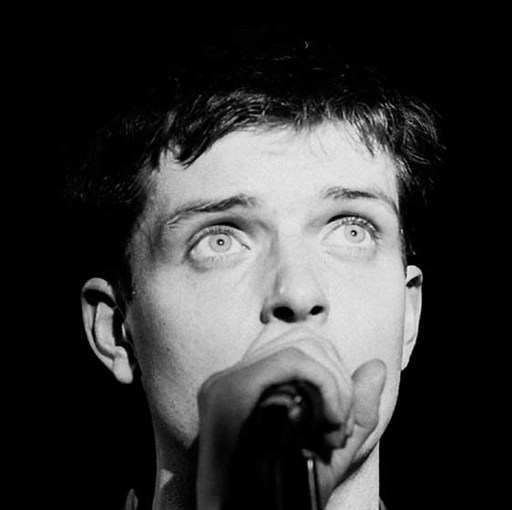The Encyclopedia of Dead Rock Stars (67 page)
Read The Encyclopedia of Dead Rock Stars Online
Authors: Jeremy Simmonds

Monday 28
Tommy Caldwell
(Spartanburg, South Carolina, 9 November 1949)
The Marshall Tucker Band

Formed in Spartanburg, South Carolina, in 1971, The Marshall Tucker Band (whose name derived from that on a mislaid key ring at their rehearsal studios) was widely hailed as one of the leading exponents of Southern rock, integrating country and jazz into their largely instrumental work. Joining his guitarist brother Toy’s band (named Toy Factory), bass-player Tommy Caldwell was just twenty-three when the eponymous debut album by the renamed Marshall Tucker Band went gold in 1973. The band’s reputation grew rapidly.
Carolina Dreams
(1977) shifted a million copies in the US, while lucrative touring slots with contemporaries Lynyrd Skynyrd and The Allman Brothers were a regular occurrence. But the connection with these rock giants extended beyond mere music: sadly, all three bands were to have similarly tragic histories.
The Caldwell brothers were understandably devastated by the death of younger sibling Tim, killed in a road crash in March 1980, so the news that Tommy Caldwell had been in a similar accident just one month later was utterly beyond belief. On 23 April, Tommy’s new Toyota Landcruiser ploughed into a stalled jeep and rolled over in Spartanburg, leaving him with head injuries from which he would not recover. Toy died just thirteen years later
( February 1993),
February 1993),
so the Caldwell parents suffered the rare heartbreak of having outlived all of their three sons.
See also
George McCorkle ( June 2007).
June 2007).

Ian Curtis: Love tore him apart
‘He cajoled us, nurtured us with his promises of success. After showing us what it looked like, he offered us a mere sip before he abandoned us on the precipice.’
Deborah Curtis, 1995
MAY
Sunday 18
Ian Curtis
(Stretford, England, 15 July 1956)
Joy Division

Nowadays looked upon with respect, Ian Curtis was always an outsider in his own lifetime: only his lyrics gave the world a small insight into the complexities of his mind. Then, on the eve of a debut US tour for Joy Division, the talismanic singer hanged himself at his Macclesfield home. It was a sudden, brutal climax to a short career starkly highlighted by a lethal combination of powerful performance, crippling illness and a need for control.
In their early career, Joy Division were frequently pulled up over trite flirtations with fascism (the name refers to the prostitutes’ wing of a concentration camp in Karel Cetinsky’s novel
House Of Dolls),
but on offloading this burdensome reputation, they sought to develop a sound that was both evocative and timeless. This, allied with Curtis’s highly personal lyrics, made Joy Division one of the era’s most influential British rock acts before the singer’s death. But, far from the miserablist of the media’s creation, Curtis was a visionary who found humour in the bleak and supreme beauty within the deeply unsightly.
With his awkward gait and sensible shirts, Curtis was never the embodiment of a rock icon – he was known locally as a loner who liked reading and history. He was always creative, writing and drawing his own books from a young age, but noticeably obsessive; within punk’s rampant energy, Curtis discovered a physical outlet for his ideas and dreams. The founder members of Joy Division (then Warsaw) – Bernard Albrecht (guitar; occasionally ‘Dicken’, now ‘Sumner’) and Peter Hook (bass) – knew immediately on meeting him that they had their man. Finding an excellent drummer in Stephen Morris, and alerting media player Tony Wilson
( August 2007)
August 2007)
– to whose Factory label the band was quickly signed, Joy Division set about surrounding themselves with other charismatic individuals in the shape of late gurus producer Martin Hannett
( April 1991)
April 1991)
and manager Rob Gretton
( May 1999
May 1999
). It was Joy Division’s live appearances for which they were best known, the singer’s wild staring eyes and flailing limbs drawing the most attention. This was no gimmick, however: Ian Curtis had epilepsy, only discovering the condition in adulthood. After a particularly severe fit, a hospitalized Curtis had been advised to take things easier if he were to enjoy a normal life. But ‘a normal life’ was
not
what the singer wanted – not part of his grand scheme and certainly not why he’d joined a band.
Curtis had begun to remove himself from the routine of his domestic life, his wife, Deborah, and their expected baby. Joy Division were a close-knit bunch who enjoyed one another’s company and their ‘focal point’ found it increasingly hard to balance the demands of his professional life with the commitments of his home. Deborah Curtis says: ‘Factory was like a family – they’d exclude anyone who wasn’t what they were looking for.’ Also, this being early 1979, loud jarring noise and strobe lighting were a fact of the live rock show: few concessions would be made for Curtis’s condition. But although they could sound angular, stark and brutal, Joy Division were far from just another punk band. They had by now arrived at sounds that drove rock elsewhere, away from the saturated three-chord structures of the past few years. Their debut album,
Unknown Pleasures
(1979), with its shifting, contorting shapes and restless lyrics, confirmed all previous hyperbole. With critical acclaim secured and international fame impending, all kinds of opportunities began to open up for Joy Division. It was, however, the start of a difficult period for Ian Curtis’s wife and their newborn daughter.
